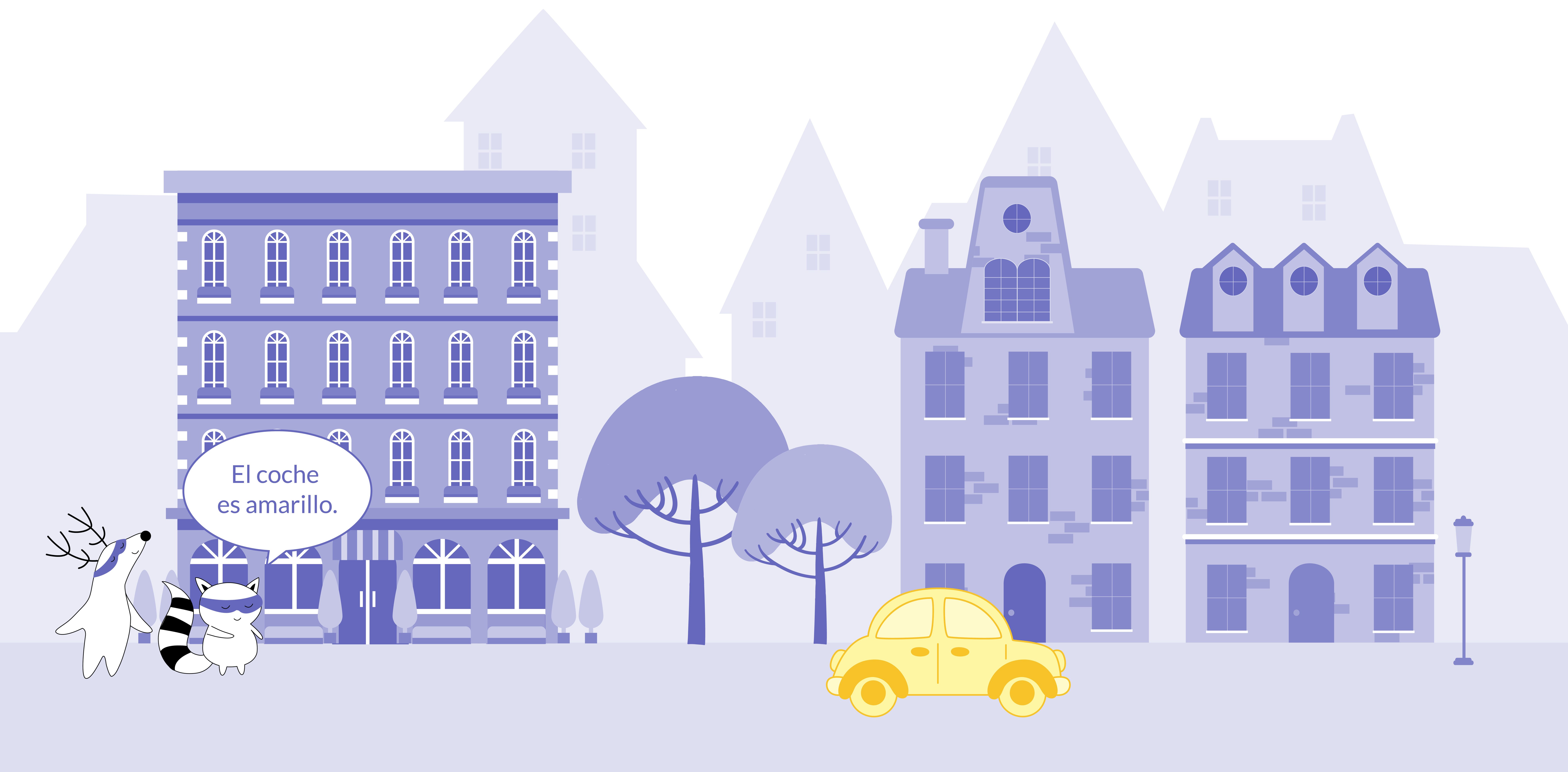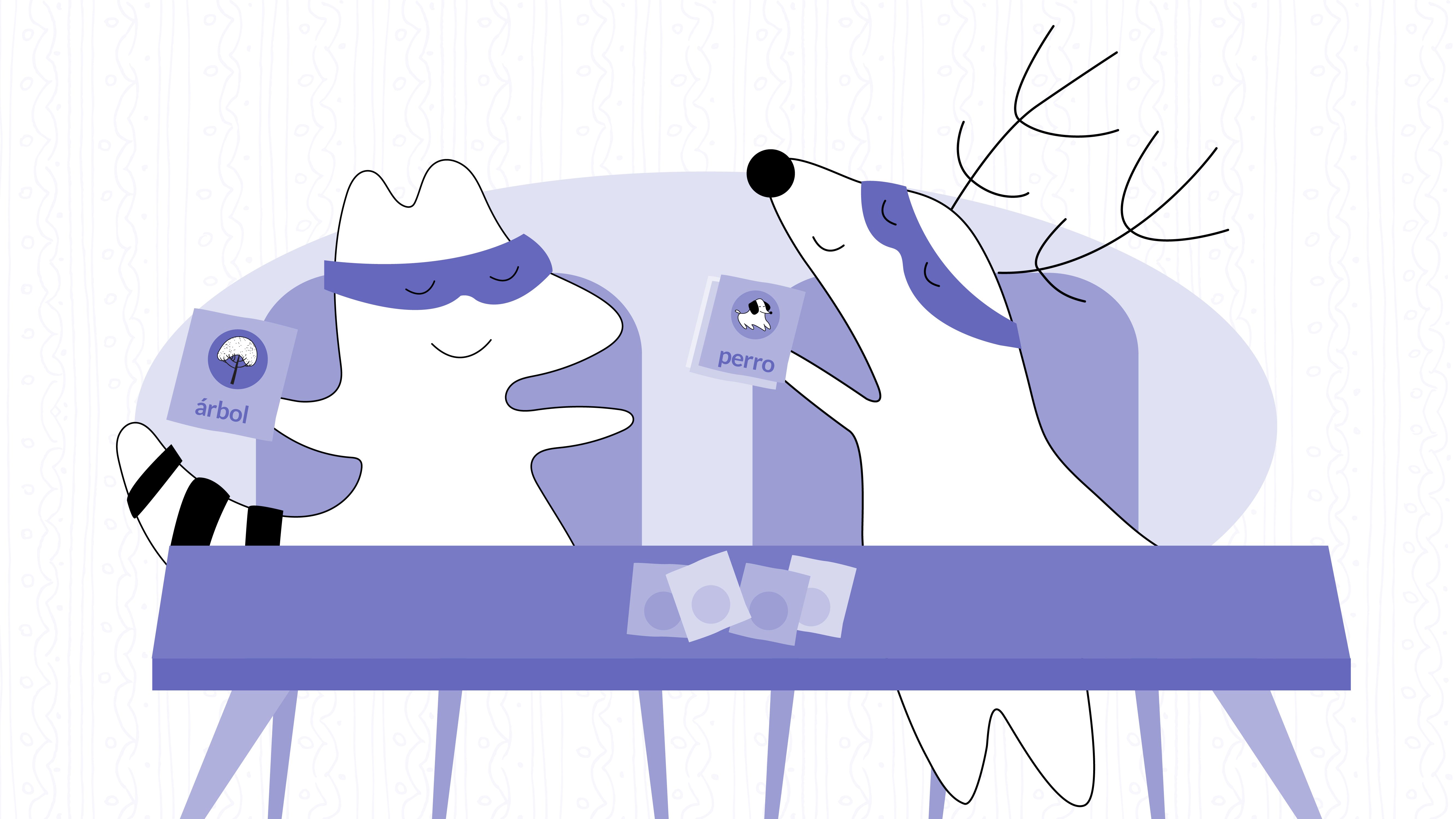
Embark on a thrilling linguistic journey as we unravel the mysteries of Spanish adjectives, a vital component to achieving fluency in the language. While Spanish newcomers may initially find descriptive adjectives perplexing due to their unique gender and number agreement rules, this comprehensive guide will illuminate the path to success.
So, let's delve deeper into the world of Spanish adjectives and elevate your language skills to new heights!
Learn Spanish with Langster
The Importance of Understanding Spanish Adjectives
Understanding how to use basic Spanish adjectives is crucial for effective communication in Spanish, as they provide essential information and describe nouns.
By understanding how to accurately describe objects, people, places, and ideas, you will be able to share your thoughts and experiences more clearly and authentically.
Additionally, knowing how to use the most common Spanish adjectives correctly will enhance your reading comprehension and writing abilities. We'll give you more details on how to use Spanish adjectives like a native Spanish speaker below.
Placement of Adjectives in Spanish
When you start learning the language, you'll notice that native Spanish speakers place adjectives after the noun they modify, unlike in English.
However, certain adjectives, such as demonstrative adjectives, numbers, and a few others, can precede the noun in a Spanish sentence. Here are more examples to illustrate this concept in Spanish vocabulary:
Adjectives Following the Noun:
Spanish
English
Flores amarillas
yellow flowers
Ciudad grande
big city
Mujer hermosa
beautiful woman
Coche antiguo
old car
Adjectives Preceding the Noun:
| Adjective Type | Explanation | Example | Translation |
|---|---|---|---|
| Demonstrative adjectives | These adjectives point out specific objects or people and agree in gender and number with the noun they modify. | Este perro | This dog |
| Numbers | Quantitative adjectives indicate the quantity or amount of something and usually precede the noun. | Dos gatos | Two cats |
| Interrogative adjectives | Used in questions, these adjectives typically precede the noun. | ¿Qué libro quieres? | Which book do you want? |
| Indefinite adjectives | These adjectives express an indefinite quantity or amount and generally precede the noun. | Algunas personas | Some people |
| Possessive adjectives | These adjectives express possession. | Mi perro | My dog |
| Certain descriptive adjectives | When adjectives express subjective feelings or opinions, this positioning adds emphasis or a poetic touch to the expression. | Un viejo amigo | An old friend, which indicates a long-lasting friendship |
| Adjective Type | Explanation | Example | Translation |
|---|---|---|---|
| Demonstrative adjectives | These adjectives point out specific objects or people and agree in gender and number with the noun they modify. | Este perro | This dog |
| Numbers | Quantitative adjectives indicate the quantity or amount of something and usually precede the noun. | Dos gatos | Two cats |
| Interrogative adjectives | Used in questions, these adjectives typically precede the noun. | ¿Qué libro quieres? | Which book do you want? |
| Indefinite adjectives | These adjectives express an indefinite quantity or amount and generally precede the noun. | Algunas personas | Some people |
| Possessive adjectives | These adjectives express possession. | Mi perro | My dog |
| Certain descriptive adjectives | When adjectives express subjective feelings or opinions, this positioning adds emphasis or a poetic touch to the expression. | Un viejo amigo | An old friend, which indicates a long-lasting friendship |
Comparatives and Superlatives

Another important aspect of Spanish adjectives is forming comparatives and superlatives, which allows you to express varying degrees of quality.
Comparatives compare two things, while superlatives express the highest or lowest degree of quality among three or more things. Here's how to form these descriptive words:
Comparatives
For most adjectives, use the formula:
- "más/menos + adjective + que" (more/less + adjective + than)
Spanish
English
María es más alta que Pedro.
Maria is taller than Pedro.
El café está menos caliente que el té.
The coffee is less hot than the tea.
Superlatives
Use the formula:
- "el/la/los/las + más/menos + adjective" (the most/least + adjective)
Spanish
English
El coche más rápido.
The fastest car.
La casa menos cara.
The least expensive house.
Irregular Comparatives and Superlatives
Some adjectives have irregular comparative and superlative forms that don't follow the standard rules. Here are a few examples in their singular and plural form:
| Singular | Plural | Translation |
|---|---|---|
| bueno | buenos | good |
| buena | buenas | good |
| el mejor | los mejores | the best |
| la mejor | las mejores | the best |
| malo | malos | bad |
| mala | malas | bad |
| el peor | los peores | the worst |
| el peor | las peores | the worst |
| Singular | Plural | Translation |
|---|---|---|
| bueno | buenos | good |
| buena | buenas | good |
| el mejor | los mejores | the best |
| la mejor | las mejores | the best |
| malo | malos | bad |
| mala | malas | bad |
| el peor | los peores | the worst |
| el peor | las peores | the worst |
By understanding and practicing the various forms and uses of comparatives and superlatives in Spanish, you'll be able to express differences and degrees of qualities more effectively, enriching your conversations and enhancing your overall language skills.
Demonstrative Adjectives

Demonstrative adjectives point out specific objects or people and agree in gender and number with the noun they modify.
In Spanish, there are three sets of demonstrative adjectives:
| Demonstrative adjectives | Translation | Explanation |
|---|---|---|
| este, esta, estos, estas | this, these | Used for objects or people close to the speaker. |
| ese, esa, esos, esas | that, those | Used for objects or people at a medium distance from the speaker or close to the listener. |
| aquel, aquella, aquellos, aquellas | that, those | Used for objects or people far away from both the speaker and listener. |
| Demonstrative adjectives | Translation | Explanation |
|---|---|---|
| este, esta, estos, estas | this, these | Used for objects or people close to the speaker. |
| ese, esa, esos, esas | that, those | Used for objects or people at a medium distance from the speaker or close to the listener. |
| aquel, aquella, aquellos, aquellas | that, those | Used for objects or people far away from both the speaker and listener. |
Here's a handy table with examples of demonstrative Spanish adjectives in different forms:
| Form | Example | Translation |
|---|---|---|
| Masculine singular form | Ese libro. | That book. |
| Masculine adjective plural | Esos libros. | Those books. |
| Feminine singular form | Esta camisa. | This shirt. |
| Feminine adjective plural | Estas camisas. | These shirts. |
| Form | Example | Translation |
|---|---|---|
| Masculine singular form | Ese libro. | That book. |
| Masculine adjective plural | Esos libros. | Those books. |
| Feminine singular form | Esta camisa. | This shirt. |
| Feminine adjective plural | Estas camisas. | These shirts. |
Adjectives of Nationality and Origin
Adjectives of nationality and origin are used to describe a person's country or place of origin. In Spanish, these adjectives agree in gender and number with the noun they modify:
Spanish
English
Americano
American
Español
Spanish
Japonés
Japanese
How to Practice & Learn Spanish Adjectives
Learning and practicing Spanish adjectives can be an enjoyable and rewarding experience when you use the right strategies. Here are some tips and tricks to help you master Spanish adjectives:
Create flashcards
Write a Spanish adjective on one side of an index card and its English translation on the other. Include the adjective's gender and number variations, if applicable.
Review these flashcards regularly to reinforce your memory.

Categorize adjectives
Organize adjectives into categories, such as colors, sizes, shapes, emotions, or nationalities. This will help you recognize patterns and remember them more easily.
Practice with real-life examples
Describe objects, people, and scenes around you using Spanish adjectives. This will help you apply your knowledge in real-life situations and strengthen your vocabulary.
Read and listen to Spanish content
Expose yourself to authentic Spanish materials, such as books, articles, podcasts, and videos. This will help you see and hear adjectives used in context, improving your understanding and retention.
Use mnemonic devices
Create mental associations or visual images to help you remember specific adjectives and their meanings. For example, imagine a grande (big) elephant wearing a pequeño (small) hat.
Learn synonyms and antonyms
Expand your vocabulary by learning words with similar or opposite meanings. This will help you express yourself more precisely and understand the nuances of the language better.
Practice with native speakers
Engage in conversations with native Spanish speakers in person or through language exchange platforms. This will give you valuable feedback on your usage of adjectives and help you refine your skills.
Drill gender and number agreement
Regularly practice changing the gender and number of adjectives to match the nouns they modify. This will help you internalize the agreement rules and become more fluent in using adjectives.
Learn irregular adjectives
Familiarize yourself with irregular comparative and superlative forms of adjectives, as well as those with different meanings depending on their position in a sentence.
Test yourself
Regularly quiz yourself on your knowledge of Spanish adjectives. You can use online quizzes, language learning apps, or create your own tests.
The Bottom Line

Having delved into the captivating world of Spanish adjectives, you're now equipped with valuable knowledge that will serve as a solid foundation for your language-learning journey.
To put your newfound skills to the test, download our app, Langster, and immerse yourself in interactive lessons, engaging exercises, and personalized feedback designed to help you become a confident and fluent Spanish speaker.
Set sail on an exciting journey to Spanish fluency with Langster by your side!
Learn Spanish with Langster









